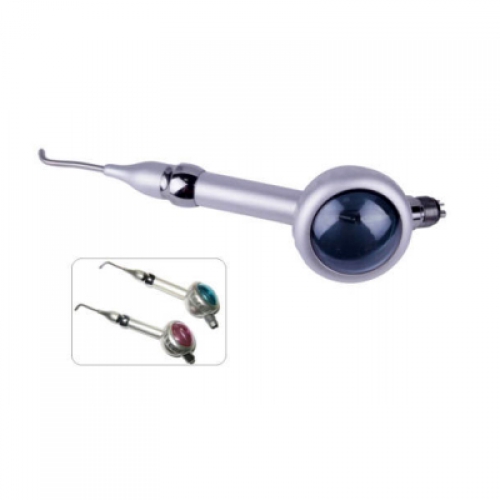New technology is transforming all areas of the way we live and dentistry is no exception. The innovative air flow polishing technique uses a machine that cleans and polishes the teeth with a mix of water, compressed air and fine powder particles. This method is far superior to traditional cleaning methods that use scraping tools, rubber cups and polishing discs and which can be time-consuming and uncomfortable.
A powerful yet controlled jet of water, air and fine powder not only polishes all the surfaces of a tooth, removing plaque, discoloration and soft deposits, but also reaches deep into periodontal pockets up to a depth of 5 mm. It is far more efficient than traditional scrape and polish treatment at removing the damaging biofilm that develops when dental plaque is colonized by bacteria and can cause periodontitis and peri-implantitis to develop. Air flow polishing is completely safe to use with dental implants, veneers, crowns and bridges.
In air polishing, the powder of choice is usually sodium bicarbonate which is abrasive and helpful with the removal of heavy stains and soft deposits above the gumline. With dental air polishers, the tip is specialized to be able to effectively enter the periodontal pocket and deliver a very low abrasive powder. The powder of choice with air polishing is Glycine. Glycine is an amino acid and is significantly smaller in particle size than sodium bicarbonate. It appears to have an active role in the disruption of bacterial recolonization making it both preventive and therapeutic.
The main goal in air polishing is root debridement resulting in the removal of biofilm. This biofilm elimination can result in a beneficial shift in the oral microbiota. Studies have shown that air polishing tends to have less adverse effects for the patient such as pain and sensitivity versus hand instrumentation. Moreover, the air polisher is much more effective in reaching the base of pockets over 5mm and removing biofilm than hand instrumentation.
Air polishing is also proven to be clinically efficient and effective for the removal of biofilm without endangering soft tissues, enamel, dentin, or cementum. The procedure is very quick and simple. The tip is placed at a 90-degree angle to the long axis of the root, and a 5-second application disperses air, water, and glycine powder for the removal of biofilm.
Air flow polishing is ideal for those who suffer from sensitive teeth. This is not only due to the lack of direct contact and the absence of heat and vibration, but because the tiny micro particles of powder can actually fill any exposed dentine tubules and reduce dental sensitivity. Air flow polishing can also encourage the re-mineralization of damaged teeth.
